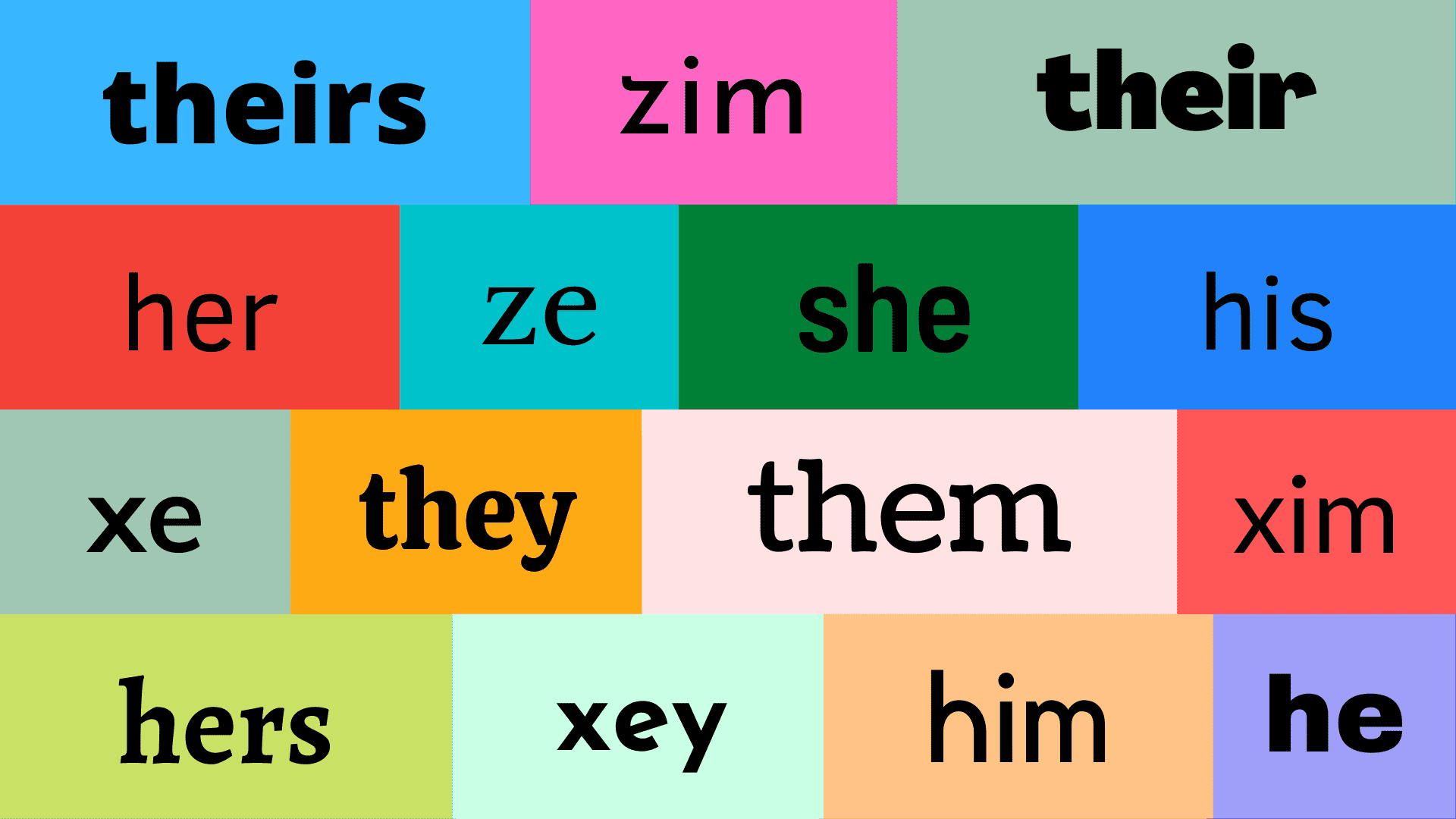Why do we need to use preferred gender pronouns (PGPs)?
We all know that language is powerful. It can build people up or tear them down. It can create bonds or divide us, and it can reflect our values and beliefs – or lack thereof. The words we use can help break down stereotypes and assumptions or reinforce them. They can make someone feel included or excluded, respected or disrespected. In this sense, pronouns may not seem like a big deal, but they become a bigger deal when you try to speak or write without them. You can basically challenge yourself to talk for five minutes without using any preferred gender pronouns…
It would not be easy as it may seem. For some people, pronouns are a big deal because others do not always use (or try to use) the correct pronouns to describe them.
“What are your preferred gender pronouns?”
Preferred gender pronouns, or PGPs, are the pronouns that an individual prefers others to use when talking to or about that individual. You can learn about one’s preferred pronouns by simply asking “What are your preferred gender pronouns?” or “How would you like me to refer to you?”. If you ask for someone’s pronouns, you are indicating that you are willing to use the pronouns that they prefer. Allowing people to share their pronouns communicates that you are open to hearing about their gender identity and that you will respect their pronouns.
Why are they important?
Using preferred gender pronouns is important because it shows that you respect someone’s identity. It can also make someone feel more comfortable and safer. It allows people to identify with a particular pronoun that they feel best represents their gender identity. For some people, this may be the pronoun that they were assigned at birth, while for others, it may be a different pronoun altogether. We should remember that not everyone identifies as either male or female or with any specific gender. Hence, it is important to be respectful of everyone’s individual preferences. PGPs also help to create a more inclusive and affirming environment for everyone, regardless of their gender identity.
What gender pronouns are there?
Common gender-specific pronouns include “he/him/his,” and “she/her/hers.” Some of the issues with these pronouns are that they are not inclusive of all gender identities, and they can be used to reinforce gender stereotypes. Some people feel that the use of gender-specific pronouns can be exclusionary, especially for people who identify as non-binary or genderqueer. In a nutshell, gender-specific pronouns do not always accurately reflect an individual’s gender identity, and they can be exclusive to people who do not identify within the gender binary (i.e., the idea that there are only two genders, male and female, and that everyone must fall into one of these two categories, also called the gender dichotomy).
What are Gender-Neutral Pronouns?
Gender-neutral pronouns are pronouns that are not associated with any particular gender. They are used to refer to people who do not identify with any specific gender, or to people whose gender is unknown or irrelevant. Gender-neutral pronouns are important because they allow people to be referred to in a way that is not associated with any particular gender. Gender-neutral pronouns can also be used to avoid making assumptions about someone’s gender. Some gender-neutral pronouns are “they/them/theirs”, “ze/hir/hirs”, “ze/zir/zirs”, and “xe/xem/xyrs”.
Pronouns are a way of showing respect for someone’s gender identity and using the wrong pronoun can be seen as disrespectful (i.e., misgendering), but everyone can make mistakes at times. Thus, generally speaking, if you realise you have used the wrong pronoun, it is best to apologise and correct yourself.
What does this all mean for you as a business?
This is a topic that many businesses are still coming to grips with. Many businesses and organisations have a long way to go in making sure their policies, practices, and physical spaces are inclusive. The most important thing you can do as a business is to make sure that you have policies in place that welcome, protect, and respect the rights of all your employees and customers. Besides providing gender-neutral restrooms, locker rooms, and other physical spaces, and making sure that your employees are comfortable and can perform their duties in the gender they identify with, you should also make sure that your employees are trained on how to treat all your customers and colleagues with dignity and respect. This applies to using one’s preferred gender pronouns as well.
So, let’s commit to using gender-neutral language whenever possible. This does not mean we have to avoid using gendered terms altogether – after all, some people do identify as a specific gender, but it does mean being mindful of the impact of our words and making an effort to be inclusive.
P.S. If you want to practice using gender-neutral pronouns and see their usage in written language, you can use the following website for the Pronouns Practice App by Minus18: https://pronouns.minus18.org.au/
If you think that you can benefit from professional support on this issue you can reach out here.
Seray Soyman is working as a Trainee Psychosexologist within the Willingness team, providing psychosexual education and sexual support sessions, as well as delivering training and workshops. She is also pursuing her master’s in Clinical Psychosociology at Sapienza University, Rome. Seray’s research interests are sex-positive behaviour, sexual habits, LGBTQIA+ studies, and sexual communication.
References
GSAFE Creating Just schools for LGBTQ+ Youth. (n.d.). What the heck is a “PGP”?. https://www.gsafewi.org/wp-content/uploads/What-the-heck-is-a-PGP1.pdf
Minus18. (2021, May 25). What are pronouns and why are they important?. https://www.minus18.org.au/articles/what-are-pronouns-and-why-are-they-important
Pook, Z. S. (2020). The Challenge of Implementing Preferred Gender Pronouns: Queer Autonomy in the Age of Information Technologies. InterAlia: Pismo poświęcone studiom queer, 15, 6-16.







